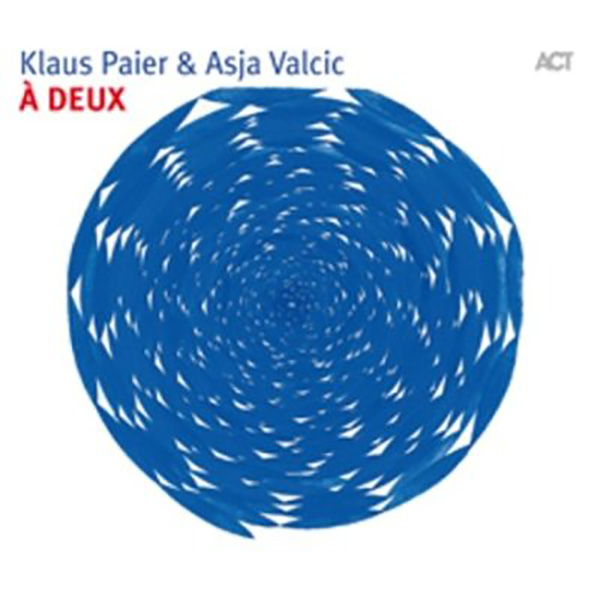
by Ian Mann
January 23, 2009
/ ALBUM
A truly remarkable recording
Accordion and cello may seem like an unpromising combination for a duo but the remarkable range of sounds Paier and Valcic summon from their respective instruments makes “A Deux” a truly remarkable recording.
Austrian accordionist Paier is also the composer of all thirteen items on the album and as a writer he covers an impressively wide range of styles, from jazz to classical, musette to tango. He also deploys the Argentinian bandoneon and in this area of music was greatly influenced by the great Dino Saluzzi. Paier also cites jazz composers Thelonious Monk, Keith Jarrett and Charles Mingus as primary influences on his writing style.
Paier and the classically trained Croatian cellist Asja Valcic recently worked together in the radio.string.quartet.vienna. The quartet’s acclaimed album “Radiotree” is reviewed elsewhere on this site. Valcic has a thorough grounding in classical and chamber music but her playing in a more improvisatory context such as here and on the “Radiotree” album is little short of astonishing. In these contexts Valcic plays with a verve and passion not normally associated with the cello. Her playing can be immensely powerful and rhythmic, using the fingers as well as the bow and utilising the body of the cello as a sound box for percussive effects.
The chemistry forged between the two musicians on the “Radiotree” album is even more pronounced in this more intimate setting. Their lines coil around each other like snakes and both players shift effortlessly between their melodic and rhythmic functions. The variety of sounds and textures generated by just two players is amazing, both musicians get the absolute maximum out of their instruments. However this is no mere technical exercise, the pair are adept at mood building and their music has considerable emotional depth, the wistful, musette flavoured “La Pirouette” being a case in point.
The album opens with a burst of energy in the form of the spirited “Tango Loco” with Valcic’s extraordinary rhythmic cello complementing Paier’s darting accordion. “La Pirouette” calms the mood before the pair trade bebop style lines on the title track.
“Singing Bird” has a folk like charm as does the following “CiCi”, the latter seemingly more dance orientated.
“Some Days” brings out the melancholy quality of Valcic’s cello together with the organ like sonorities of the accordion.
“Argentino”, as the title suggests, marks a return to tango territory which contrasts well with the following “Seven 4” which exhibits an Eastern European influence. Both tunes are of course dance orientated in origin.
The darkly beautiful “Menuet” is another example of the duo’s ability to create reflective moods and textures as the piece unfolds in an unhurried manner around a classical structure. Excellent.
The following “Sentiment Pour Le Bau” is similarly moving before the following “Bordunarosa” lightens the mood in charming fashion.
The sprightly “Valse Francaise” marks a second flirtation with the musette tradition, Paier,s lightness of touch on the accordion contrasting well with Valcic’s meaty cello lines.
“Histoire D’ Amour” closes the album in sombre but beautiful fashion, a total contrast to the fiery tango of the opener.
Mere words cannot really do justice to the quality of the interplay between the musicians or to the range of moods, sounds and textures they create. It is a tribute to their abilities that they are able to hold the listener’s attention for the course of an entire album, but the relatively brief nature of each piece means that it is also quite possible to dip in and out.
Paier’s website has live footage of the duo and provides the opportunity to study the techniques of these remarkable musicians in detail. The text is in German which may prove difficult for English viewers but it is worth visiting for the music alone. http://www.klaus-paier.com
blog comments powered by Disqus